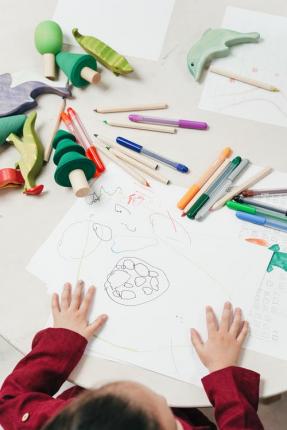Cinq conseils pour une programmation inclusive à l’intention des enfants et des ados
Le Groupe d’intérêt sur l’accès des enfants et des adolescents aux bibliothèques est constitué d’employés de bibliothèque investis et passionnés à l’égard des services de bibliothèque accessibles. Voici cinq conseils donnés par ce groupe pour vous aider à rendre vos programmes accueillants pour les familles avec handicapé. Pour plus de conseils, consultez CAÉB's guide du bricolage et autres activités accessibles et l'heure de conte.
1. Promouvoir l’accessibilité. Rendez accessible votre matériel promotionnel et de marketing en suivant des directives comme celles de WebAIM sur les caractères et les polices. Utilisez des gros caractères et des polices claires, et laissez beaucoup d’espace blanc autour de l’information importante. Intégrez les détails des éléments d’accessibilité d’un programme ou d’un service à toutes vos communications de promotion, et laissez des coordonnées pour que les participants puissent demander d’autres mesures d'adaptation.
2. Préparer des mesures d’adaptation. Adaptez vos activités de manière à répondre aux besoins des participants, en utilisant du matériel accessible comme des fournitures de bricolage plus grosses et du matériel d’écriture adapté. Sollicitez plusieurs sens en ajoutant des éléments tactiles et sonores. Formez vos employés ou vos bénévoles à l’interaction avec des personnes ayant divers types de handicap.
3. Offrir un espace physique sécurisé. Dégagez les locaux pour éviter les risques de chute et prévoyez des couloirs assez larges pour le déplacement des fauteuils roulants. Si possible, permettez aux participants de sélectionner eux-mêmes un endroit où s’asseoir répondant à leurs besoins. À titre d’exemple, les enfants malentendants préféreront peut-être s’asseoir près de l’animateur, tandis que ceux n’aimant pas les foules voudront sans doute s’asseoir à l’écart.
4. Offrir des instructions de multiples manières et sous divers formats. Lors des activités, donnez des instructions brèves et précises, étape par étape. Si vous l’estimez pertinent, proposez des instructions visuelles, comme des exemples du déroulement d’une activité de bricolage. Lorsque vous lisez une histoire, décrivez les images qui ne sont pas expliquées par le texte.
5. Approche communautaire. Prenez contact avec des organismes communautaires pertinents, des écoles et des groupes de parents ou d’aidants. Adhérez à l’approche de la communauté des handicapés « Rien à notre sujet sans nous » et permettez aux membres de la collectivité de s’exprimer en leur propre nom. Consultez les personnes handicapées au sujet des types de programmes et de services qui les attirent, et sur la manière dont la bibliothèque pourrait le mieux répondre à leurs besoins en matière d’accessibilité.


